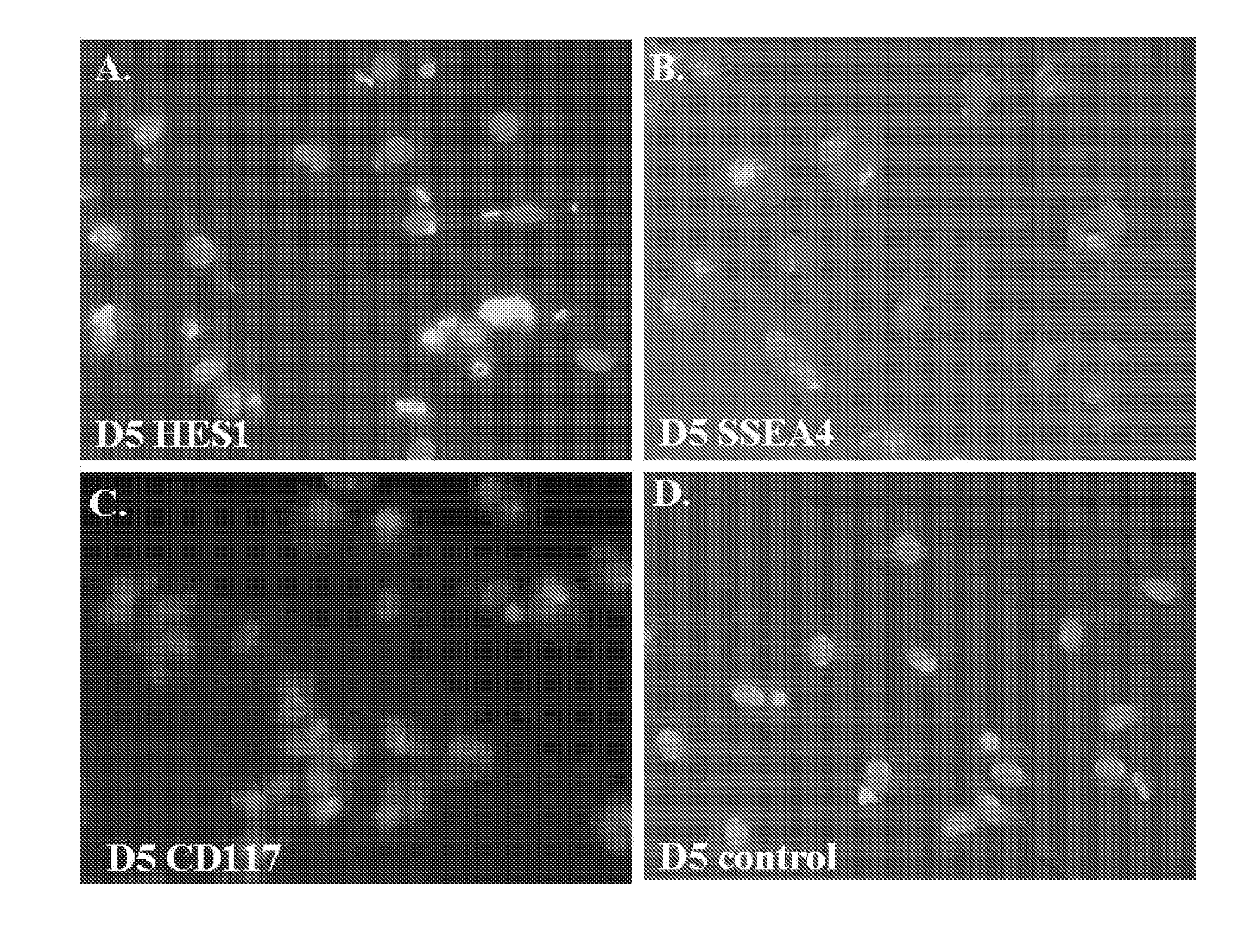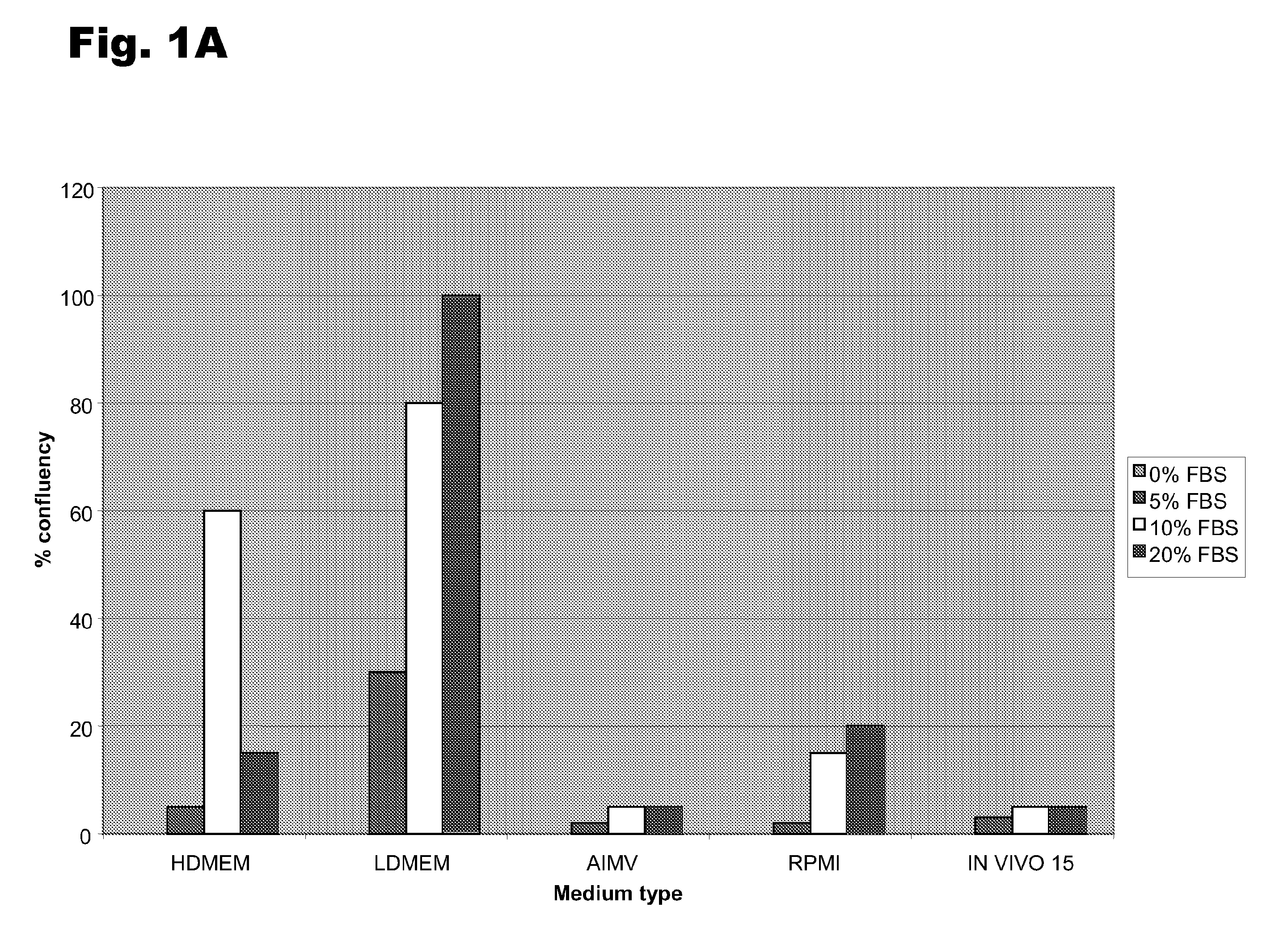Monocyte-derived stem cells
a technology of monocytes and stem cells, applied in the field of monocyte-derived stem cells, can solve the problems of low yield, ineffective transmission of infections, and low yield of autologous bone marrow, and achieve the effects of low yield, low yield, and reduced production efficiency
- Summary
- Abstract
- Description
- Claims
- Application Information
AI Technical Summary
Benefits of technology
Problems solved by technology
Method used
Image
Examples
example 1
Generation of Monocyte-Derived Stem Cells (MDSCs)
[0043]Isolation of Monocytes. Monocytes were isolated from adult human peripheral blood using a single-step discontinuous Ficoll gradient. During this procedure, peripheral blood monocytes are localized to the interface between the blood plasma and the separation medium. To help maintain the interface, LeucoSep centrifuge tubes, which contain a positioned porous membrane barrier, were used. LeucoSep tubes (30-ml) were prepared by adding 15 ml of Lymphocyte Separation Buffer (Cat. no. 25-072-cv, Mediatech Cellgro) and centrifuging at 1000×g for 30 sec at room temperature to drive the buffer through the membrane barrier. Then 15 ml of blood and 30 ml of 1×HBSS (Hanks Balanced Salt Solution) with 2 mM EDTA were added to each tube. The tubes were centrifuged at 1000×g for 10 minutes at 4° C. After this centrifugation step, the enriched cell fraction containing lymphocytes and monocytes was located above the membrane barrier. The tubes wer...
example 2
Growth in Different Medium Formulations
[0048]To determine the optimal conditions for growth and de-differentiation, several different medium compositions and serum levels were examined. Monocytes were derived as described in Example 1; they were plated in AIM V medium and cultured overnight at 37° C. The cells were then transferred to and grown in five different medium formulations: HDMEM, LDMEM, AIM V, RPMI, or IN VIVO 15 media. Each formulation was supplemented with 0, 5, 10, or 20% FBS and the two de-differentiation agents, 10 ng / ml LIF and 25 ng / ml M-CSF. The cells were grown for 6 days, with the medium changed at day 3. There was no difference in the percentage of MDSCs among the different conditions, but the total number of cells varied significantly among the different conditions. As shown in FIGS. 3A and 3B, growth in the presence of LDMEM or HDMEM and 10-20% FBS resulted in much higher total number of total cells per plate.
example 3
Growth on Different Substrates
[0049]To determine whether the substrate affected growth and de-differention, isolated monocytes were plated on fibronectin, gelatin, collagen, poly-lysine, or L-ornithine coated plates. The cells were grown in de-differentiation medium for 6 days, with the medium changed at day 3. Cells were collected by treatment with 0.5% lidocaine with gentle scraping and counted with a Vi-CELL cell counter. There was a small increase in the total numbers of cells grown on fibronectin or gelatin-coated plates (5-15% increase in total cell number) after 3 and 6 days in culture. The percentage of MDSCs was not significantly changed among the different treatments.
[0050]When culturing cells on different brands of polystyrene tissue dishes, it was discovered that there was a 50% increase in the initial adhesion and growth of cells on FALCON integrid vacuum gas plasma treated plates, as compared to NUNC and other brands of plates. There was also a higher percentage of MDS...
PUM
| Property | Measurement | Unit |
|---|---|---|
| concentration | aaaaa | aaaaa |
| concentration | aaaaa | aaaaa |
| concentration | aaaaa | aaaaa |
Abstract
Description
Claims
Application Information
 Login to View More
Login to View More - R&D
- Intellectual Property
- Life Sciences
- Materials
- Tech Scout
- Unparalleled Data Quality
- Higher Quality Content
- 60% Fewer Hallucinations
Browse by: Latest US Patents, China's latest patents, Technical Efficacy Thesaurus, Application Domain, Technology Topic, Popular Technical Reports.
© 2025 PatSnap. All rights reserved.Legal|Privacy policy|Modern Slavery Act Transparency Statement|Sitemap|About US| Contact US: help@patsnap.com



